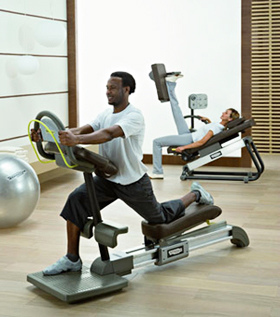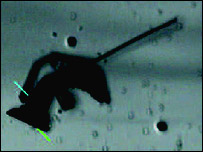Why?
Stretching your muscles is good preparation for all types of sports and fitness; it helps prevent injury for people who exercise intensely, or, on the flipside, for people whose muscles are stiff. By fitting out the stretching area in your club with equipment featuring cutting-edge technology, you’ll open new horizons for your business, relaunching an activity that has the potential for a very broad user spectrum.
The FLEXability™ Line is Anterior and Posterior, two pieces of equipment that together stretch all the body’s main muscle groups, designed to achieve maximum performance for minimum effort in every exercise.
Users can adjust FLEXability™ entirely on their own; it’s designed for total comfort, revolutionizing the stretching experience and transforming it into a pleasant new form of exercise.
Who’s it for?
Athletes who want to prevent strains and other injury and reduce the muscle tension caused by intense, targeted workouts.
For mature exercisers, who want to maintain and, where possible, improve the elasticity and flexibility of their joints and the efficiency of their muscles.
For people who want to relax with a pleasant exercise that’s non-invasive but still produces results for your physical condition.
For newcomers to physical activity, in order to increase their ability to move and help get themselves into a more active lifestyle: the more movement they’re able to do, the easier it will be to tackle all the other options available in your club.
Stretching your muscles doesn’t require specific training, and that’s even more true with FLEXability™: thanks to its Method (dynamic, innovative, and patented), the line makes it possible to gradually adjust the stretching range based on your weight, preventing any risk under any condition and for any user.
And for people who want that extra incentive?
FLEXability™ is designed for that too: thanks to an assessment and feedback system on reachable results, the equipment measures the progress of your flexibility, motivating all types of users to improve their mobility and muscle extension day after day.
Choose flexibility: with FLEXability™, traditional stretching takes on a new face, becoming a high-performance activity that’s engaging for every user segment.





